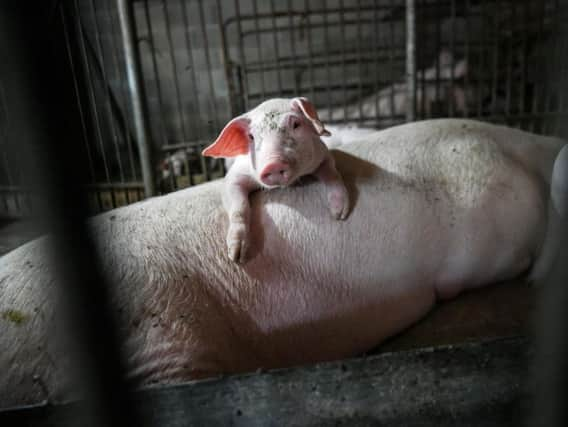Quarter of all pigs could die of swine fever, warn scientists


A sharp reduction in the world's pig population would lead to possible food shortages and high pork prices, and might also cause shortfalls in the many products made from pigs, such as the blood-thinner heparin used in humans, said Mark Schipp, the organisation's president.
The disease's spread in the past year to countries including China, which has half the world's pigs, had inflamed a worldwide crisis, Dr Schipp told reporters at a briefing in Sydney.
Advertisement
Hide AdAdvertisement
Hide Ad"I don't think the species will be lost, but it's the biggest threat to the commercial raising of pigs we've ever seen," he said. "And it's the biggest threat to any commercial livestock of our generation."
The price of pork has nearly doubled from a year ago in China, which produces and consumes two-thirds of the world's pork. China's efforts to buy pork abroad, as well as smaller outbreaks in other countries, are pushing up global prices.
"There are some shortages in some countries, and there's been some substitutions using other sources of protein, which is driving up the prices of other proteins," said Dr Schipp.
Progress has been made towards a vaccine, but Dr Schipp, who is Australia's chief veterinary officer, said the work is challenging because the virus itself is large and has a complex structure. He said a big step forward was the announcement last week that scientists had unravelled the 3D structure of the virus.
Advertisement
Hide AdAdvertisement
Hide AdAfrican swine fever is spread by contact among pigs, through contaminated fodder and by ticks. It originated in South Africa and appeared in Europe in the 1960s. A recent reappearance in western Europe came from wild pigs transferred into Belgian forests for hunting purposes.
Its capacity to spread rapidly is shown by its spread from China in the past year, Dr Schipp said. Mongolia, the Korean peninsula, south-east Asia and East Timor have had outbreaks.
He said the spread reflects the global movement of pork and people but also the effect of tariffs and trade barriers, which sends those obtaining pork to seek out riskier sources. Dr Schipp said quality control is difficult for products such as skins for sausages, salamis and similar foods.
"Those casing products move through multiple countries," he said. "They're cleaned in one, graded in another, sorted in another, partially treated in another, and finally treated in a fourth of fifth country. They've very hard to trace, through so many countries."
Advertisement
Hide AdAdvertisement
Hide AdAn emerging issue in the crisis is a potential heparin shortage, Dr Schipp said.
"Most of it is sourced from China, which has been badly hit. There are concerns that this will threaten the global supply of heparin," he added.
He praised China's efforts to battle the disease and said the outbreaks would change the way pigs are raised.
"In China, previously they had a lot of backyard piggeries. They're seeing this as an opportunity to take a big step forward and move to large-scale commercial piggeries," he said. "The challenge will be to other countries without the infrastructure or capital reserves to scale up in those ways."
